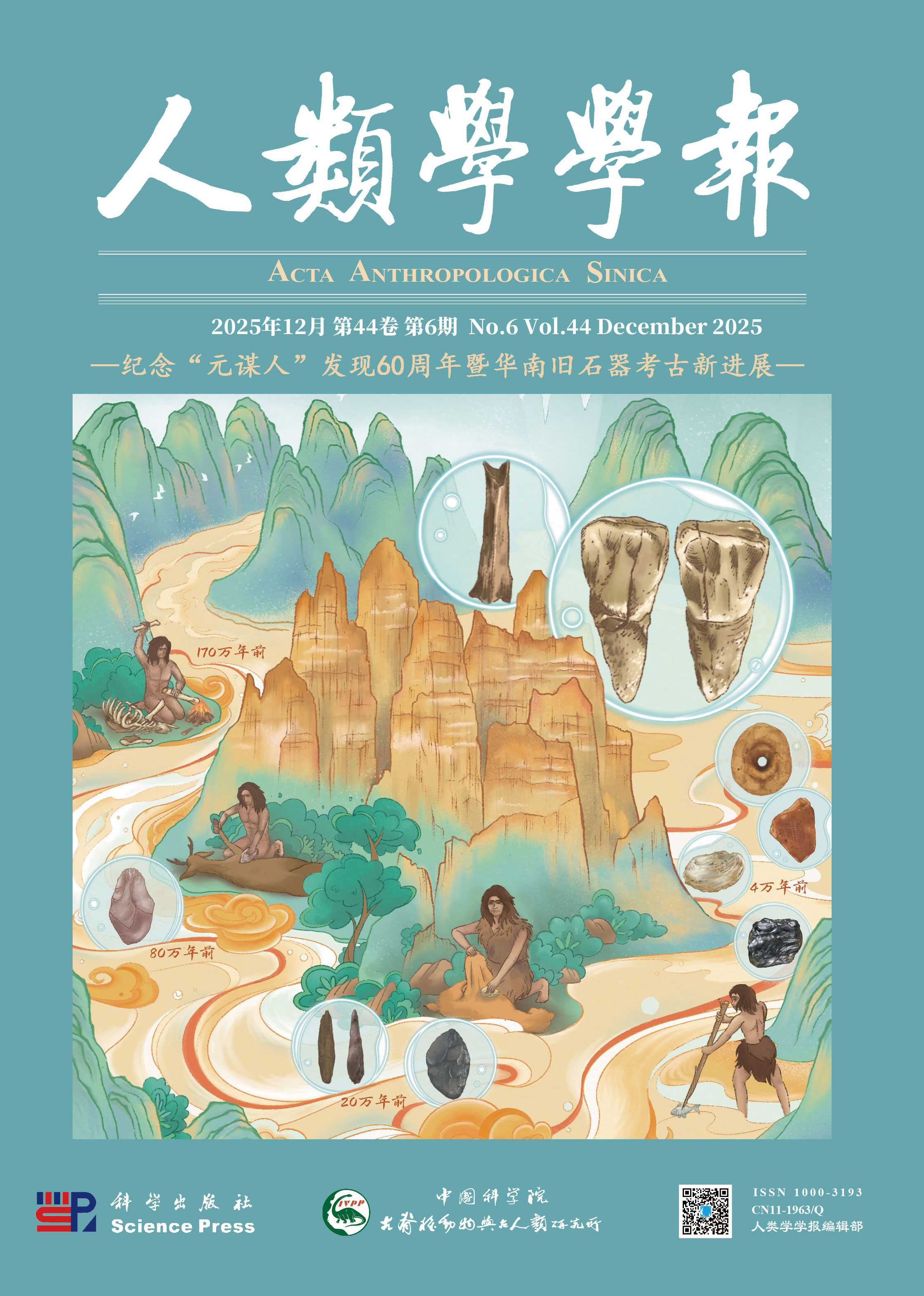Hexian fauna: correlation with deep-sea sediments
Xu Qinqi, You Yuzhu
1984, 3(01):
62-67.
 Asbtract
(
346 )
Asbtract
(
346 )
 PDF (426KB)
(
134
)
Related Articles |
Metrics
PDF (426KB)
(
134
)
Related Articles |
Metrics
Hexian fauna contains some typical members of the Ailuropoda-Stegodon fauna in So�uth China. However, there are a lot of northern members of Zhoukoudian fauna, for exam�ple, Scaptochirus, Trogontherium cuvieri, Cricetulus variant, Microtus branstioides, Tamias wimani, Ursus acctos, Megaloceros pachyosteus, Pseudaxis grayi; and some western moun�tainous animals, such as Anourosorex squamipes, Blarinella quadraticauda, Eothenomys eva and E. proditor. It seems to us that Hexian fauna represents a cold climate that may have caused many northern and western elements to migrate to southern China.
However, the existence of many typical southern elements, such as Alligator cf. sinen�sis, Stegodon orientalis, Tapirus sinensis, Megatapirus, Macaca, Miniopterus schrebersii, Rat- tus rattus, R. ed ward si, and Eothenom.s melanogaster indicates that the climate would not be very cold, because it is unlikely that these animals could have endured very low tempera�ture in Hexian County during Hexian Man's time. In respect to the mean annual tempera�ture it can be assumed that it was about 12° C corresponding to that of the present day in the southern parts of North China, where most of the Hexian fauna have their living re�presentatives. Besides, the climate would be more humid than that of North China today, for the mammalian assemblage of Hexian fauna shows, as a whole, a dominance of animals of moist- and water-loving.
As to the fauna, the presence of some oldtimers, such as Trogontherium cuvieri, Me�galoceros pachyosteus, and Homotherium, shows that it may correspond to Zhoukoudian fauna. However, the percentage of the recent species is 66% in Hexian fauna. It is intere�sting that the percentage of the recent species in some famous Late Pleistocene mammalian faunas is smaller than 66% or approximates to it. For example, the percentage of the re�cent species in Dingcun fauna is 59%, that o Xujiayao fauna is 58%, that of Salawusu fa�una is 67%, and that of Shiyu fauna is 60%. If we calculate the percentage of the recent species for both micromammalian and megamammalian respectively, that is 52.2% in Hexi�an megamammalian fauna. It is only a little smaller than those of the Late Pleistocene ma�mmalian faunas. Therefore Hexian fauna may correspond to the later Zhoukoudian fauna. It supports the view of Wu Rukang and Dong Xingren (1982).
The later Zhoukoudian fauna includes those in Layers 3—5 at Zhoukoudian, Loc. 1. Fig. 1 indicates the specific diversity in Layers 3——11 of Zhoukoudian fauna. It is clear that Layer 5 would represent a warm stage, While Layers 3—4 correspond to a cold sta�ge. Li Yanxian and Ji Hongxiang (1980) held that Layer 5 contained 29 forms, but still with more forest animals than grassland ones. Carnivora are abundant. In addition, the�re is an aquatic species in the fossil list (i.e, Trogontherium cuvieri). The rich finds have been obtained in calcareous tufas or travertines. Lithological and paleontological evidences suggest that the climate was warm and damp at the time. Just as mentioned above, Hexian fauna represents a cold stage. So it would be correlated with Layers 3— , but not with La�yer 5. Besides, Hexian fauna is correlated with Layer 5 by the 13 common species, while with Layers 3—4 by the 15 common species. Therefore, both paleoclimatologically and pa�leontologically, Hexian fauna would correspond to Layers 3— , but not to Layer 5 in Zho- ukoudian fauna.
In order to correlate the Zhoukoudian sequence (i.e. Layers 3—11) with the O'* re�cord of deep-sea sediments, Xu Qinqi and Ouyang Lian (1982) has used cluster analysis and other mathematical techniques. As a consequence, Layer 5 is correlated with O18 stage 9, while Layers 3—4 correspond to stage 8. It is probable that Hexian fauna would be cor�related with O18 stage 8, i.e. at about 240,000—280,000 years B. P.
It is evident that Trogontherium cuvieri existed in O18 stage 9 (i.e. in Layer 5 of Zho�ukoudian fauna) in North China, while it did survive in O18 stage 8 (i.e. in Hexian fauna) in southern China. During Hexian Man's time, many northern and western elements, such as Scaptochirus, Blarinella quadraticauda, Anourosorex squamipes, Tamias cf. wimani, Crice- lulus variant, Microtus brandtioides, Eothenomys inex, E. proditor, Ursus arctos, Megaloce- ros pachyosteus, and Pseudaxis grayi appeared in Hexian County. It was in O18 stage 8 that Trogontherium cuvieri died out in Europe and North China, and spent its last years in He�xian County.
The fact has proved that stage 8 had rather great effect on mammalian fauna in eastern Asia. So did it in Europe (Bonifay, 1980). As a matter of fact, during the interval between Gongwangling and Chenjiawo fauna, there existed a cold stage, called Giinz in the Alps, Me- napian in Holland, the Gokenya age in Japan, probably Cassian in central Italy, O18 stage 22 in deep-sea sediments, etc, bringing about a significant change in mammalian fauna in eas�tern Asia. The major decline in temperature may have caused many southern elements, such as Ailuropoda, Stegpdon, Megatapirus, Tapirus, Nestoritherium, Elaphodus, and Capricornis to disappear from the North and to become restricted to southern China. Most of them sur�vived in southern China, and only some reappeared in the North (Xu Qinqi and You Yu- zhu, 1982). We suggest that climate variations in regard to the mammalian fauna should be taken into serious consideration.









